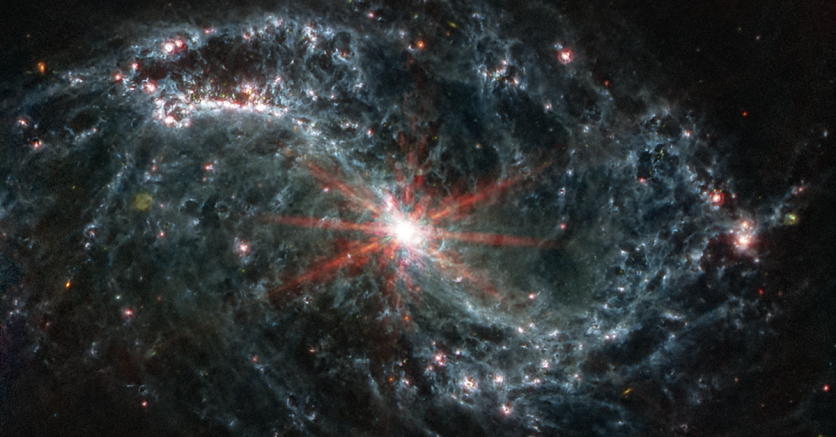NASA's James Webb Space Telescope (JWST) is equipped with deep powerful infrared vision that can capture space objects in great detail. This feat was once again proven after witnessing fascinating clouds of star formation in nearby galaxies.
Researchers from the University of California San Diego collaborated with an international project team to use telescope images and map nearby galaxies through the JWST Cycle 1 Treasury Program.

Maps of Nearby Galaxies
"With JWST, you can make incredible maps of nearby galaxies at very high resolution that provide amazingly detailed images of the interstellar medium," Karin Sandstrom, co-principal investigator on the project, said in a press release statement.
The galaxies Sandstrom's team analyzed, including one known as the Phantom Galaxy, are quite close at roughly 30 million light-years away, despite the fact that JWST can observe very far-off galaxies.
Astronomers have been aware of the Phantom Galaxy, also known as M74 or NGC 628, since at least the 18th century.
The researchers concentrated on a particular interstellar medium (ISM) element known as polycyclic aromatic hydrocarbons (PAHs).
The reason why researchers find PAHs to be so beneficial is that they are tiny dust particles, around the size of a molecule.
In contrast to bigger dust grains from the ISM, PAHs vibrate and generate emission characteristics that can be seen in the mid-infrared electromagnetic spectrum when they capture a photon from a star.
The physics of the ISM and how it functions will be better understood as a result of a greater understanding of PAHs. Astrophysicists are hopeful that JWST will provide them with a glimpse into how PAHs are created, changed, and destroyed.
Read Also : NASA's James Webb Space Telescope Catches an 'Asteroid Photobomber' Roughly the Size of Rome's Colosseum
Cycle 1 Treasury Program
Since PAHs are widely distributed throughout the ISM, researchers may observe not only the PAHs themselves but also the environment in which they are found.
Astrophysicists can now discern gas filaments and even bubbles blasted by freshly born stars, whose tremendous radiation fields and subsequent supernovas vaporize the gas clouds around them. This was made possible by JWST's powerful vision.
The Cycle 1 Treasury Program team had to plan observations that included specifics like exposure length and filters to secure observation time on the space telescope.
The data is captured and processed by the Space Telescope Science Institute, which is in charge of the scientific and mission operations for JWST after their submission was approved. Data from a total of 19 galaxies were included in this program.
The team's findings were published in The Astrophysical Journal Letters.
Related Article: NASA's James Webb Space Telescope Detects the Deepest, Coldest Ices Ever Measured in a Molecular Cloud





